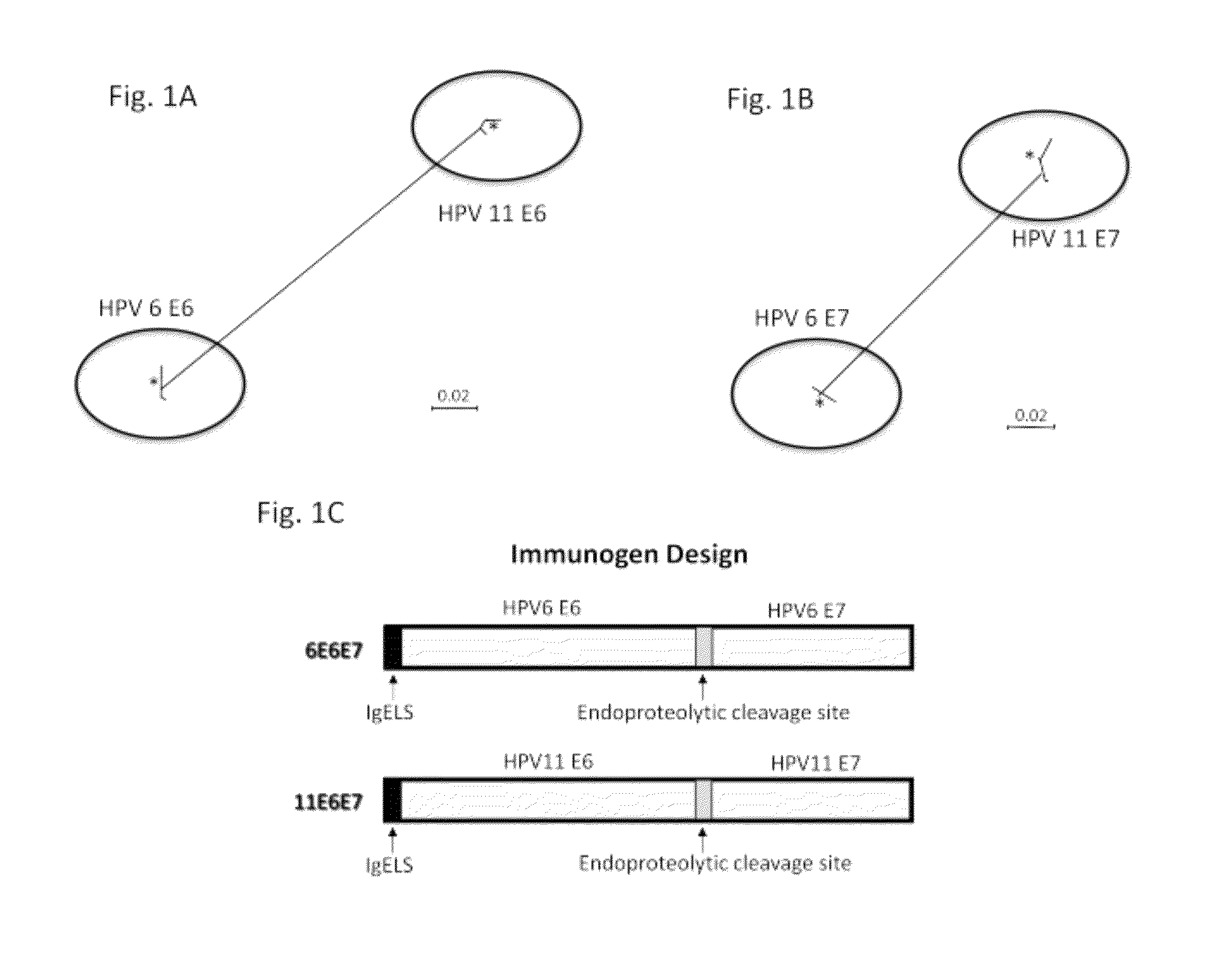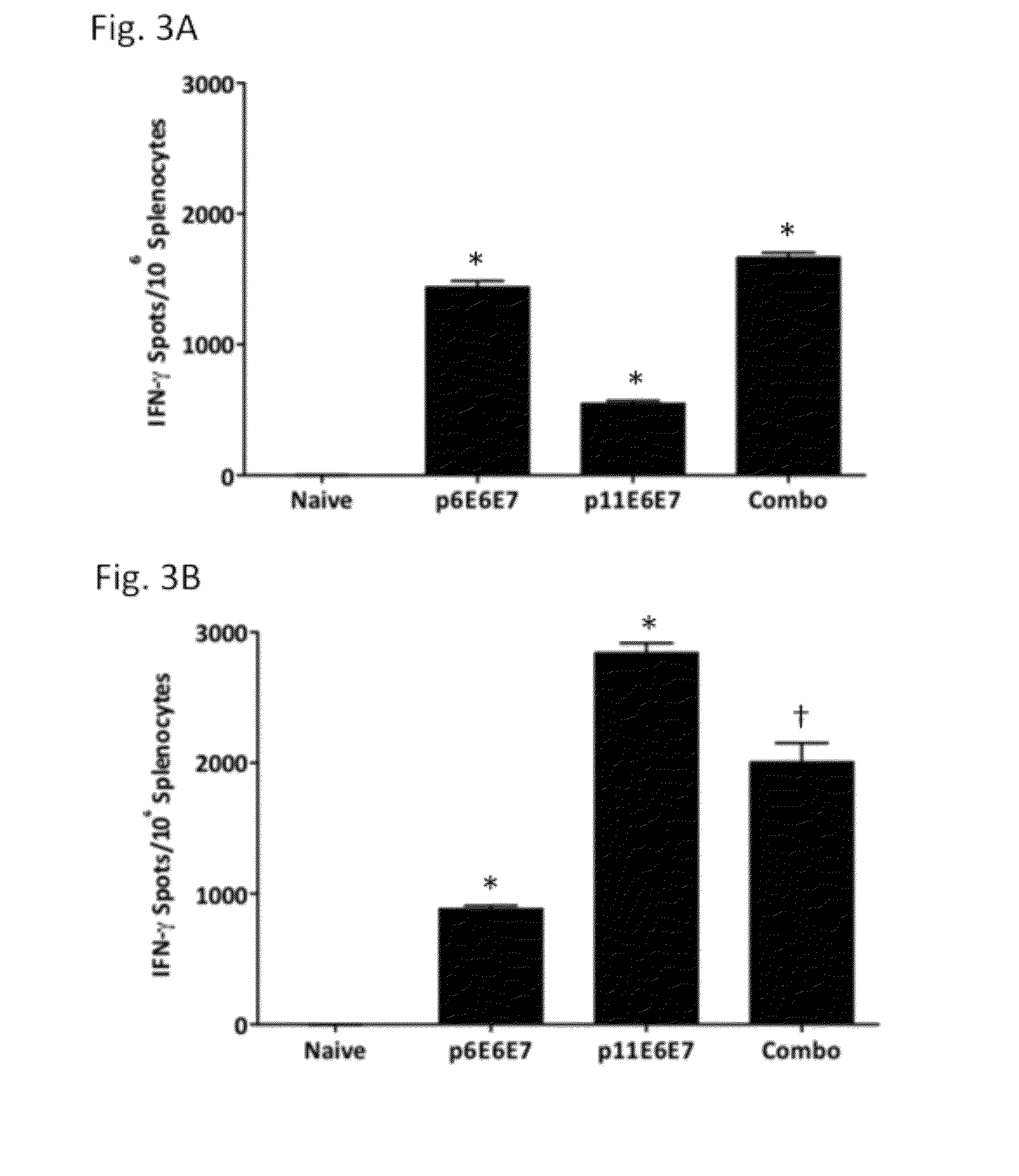Vaccines for human papilloma virus and methods for using the same
- Summary
- Abstract
- Description
- Claims
- Application Information
AI Technical Summary
Benefits of technology
Problems solved by technology
Method used
Image
Examples
example 1
HPV6 and HPV11 E6 / E7 Vaccine Design and Expression
Construction of HPV6 and 11 E6 / E7 Consensus-Based Fusion Immunogens
[0082]The HPV type 6 or 11 E6 and E7 gene sequences were collected from GeneBank, and the consensus E6 and E7 nucleotide sequences were obtained after performing multiple alignment. The consensus sequence of HPV 6 E6 or E7 proteins was generated from 98 or 20 sequences, respectively, while the consensus sequence of HPV 11 E6 or E7 proteins was generated from 76 or 13 sequences, respectively. The multiple alignment procedure applied in the phylogenetic study included the application of Clustal X (version 2.0). As indicated in FIGS. 1A and B, there were about 0-2% of sequence divergence among the HPV strains belonging to the same type in their E6 and E7 proteins. However, the genetic distances could go up to 19.3% in the E6 protein and 16.3% in the E7 protein between HPV 6 and 11. Based on these results from the phylogenic analyses, we developed two type-specific E6 / E7 ...
example 2
Mice and Treatment Groups Vaccinations
[0087]Female C57BL / 6 mice between 6 to 8 weeks old were used in this experiment. Mice were obtained from the Jackson Laboratory (Bar Harbor, Me.). The mice were housed and maintained by the University Laboratory Animal Resources at the University of Pennsylvania (Philadelphia, Pa.) in observance with the policies of the National Institutes of Health and the University of Pennsylvania Institutional Animal Care and Use Committee (IACUC). The mice used in these experiments were separated into groups of four for immunization. Mice were immunized with p6E6E7, p11E6E7, or both constructs and pVAX group served as negative control.
DNA Vaccination and Electroporation
[0088]Each mouse received three doses of 20 μg of each DNA plasmid at 14-day intervals. Mice in the group receiving both p6E6E7 and p11E6E7 received 20 μg of both plasmids for a total of 40 μg of DNA per vaccination. The DNA constructs were administered via intramuscular injection of the righ...
PUM
| Property | Measurement | Unit |
|---|---|---|
| Fraction | aaaaa | aaaaa |
| Fraction | aaaaa | aaaaa |
| Fraction | aaaaa | aaaaa |
Abstract
Description
Claims
Application Information
 Login to View More
Login to View More - R&D
- Intellectual Property
- Life Sciences
- Materials
- Tech Scout
- Unparalleled Data Quality
- Higher Quality Content
- 60% Fewer Hallucinations
Browse by: Latest US Patents, China's latest patents, Technical Efficacy Thesaurus, Application Domain, Technology Topic, Popular Technical Reports.
© 2025 PatSnap. All rights reserved.Legal|Privacy policy|Modern Slavery Act Transparency Statement|Sitemap|About US| Contact US: help@patsnap.com



